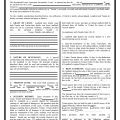Hawaii lease agreement is a legal binding document between a landlord and a tenant. The residential lease agreement follows the Hawaii state laws which require the landlord to give two days notice to tenants before entering the property for scheduling appointments. Also, the state laws that the landlord cannot ask for more than one month’s rent as a security deposit, and the deposit should be returned within 14 days once the tenant vacates.
Steps to Fill the Hawaii Residential Lease Agreement
How to fill the Hawaii Residential lease agreement
Lease details
- The date of entering the agreement and the name of the landlord and the tenant.
- The address of the property to be rented
Terms of the lease
- The duration to be leased from the start date to the end
- The amount of rent to be paid and the date for the payments
- The security deposit to be paid by the tenant
Other terms and conditions
The sections that follow highlights in details on the following:
- uses of the premises
- conditions of the premises
- Assignment and sub-letting
- Alterations and improvements.
- Non-delivery of possession.
- Hazardous materials
- utilities
- maintenance and repair rules
- damage to the premises
- inspection of premises
- subordination of lease
- Tenant’s holdover
- Surrender of premises
- Animals which includes the pets allowed and the deposit amount for the pets
- Quiet of enjoyment
- Indemnification
- default
- late charges
- Abandonment
- Attorneys’ Fees
- recording of agreement
- governing law
- severability
- binding effect
- Descriptive heads
- construction
- non-waiver
- modification
Notices
The notices permitted by the governing laws can be served or given to either of the parties. There is a need for:
- Landlords and address
- Tenants name and address
- Island contract
- Additional provisions and disclosure in details if available
Signing
- date signed by the landlord
- the signature, name of the landlord as well as the date
- the date signed by the tenant
- the signature, name of the tenant and the date
The Hawaii residential lease agreement highlights the responsibilities of the landlord and the tenant and protects both parties. The tenant is expected to fill in accurate details where necessary and have an understanding of what the agreement dictates to allow for a smooth tenancy.




